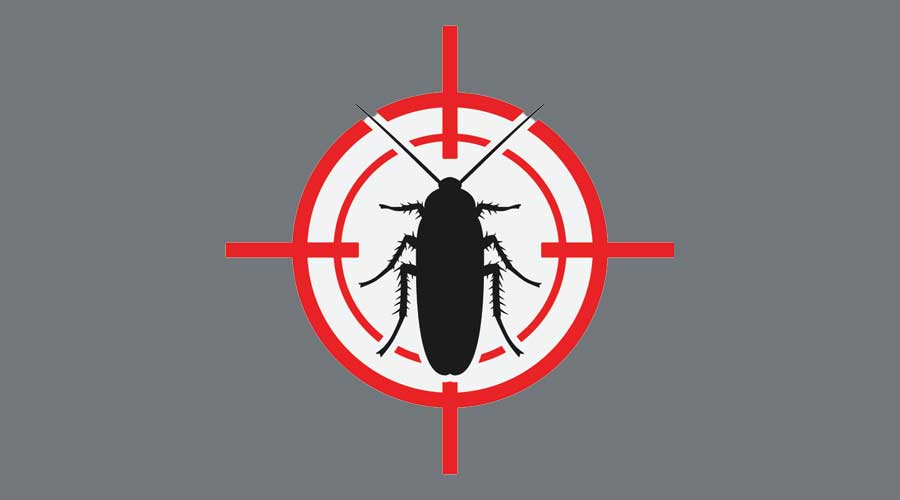
Contributed by Dr. Jim Fredericks, Senior Vice President of Public Affairs for the National Pest Management Associations (NPMA)
While most would consider the spring and summer peak pest season, for commercial facilities, pests are a year-round threat. During the cooler fall and winter months, that threat increases as pests like rodents, cockroaches and nuisance wildlife flock to these facilities in search of food sources and respite from the elements. The best way for facilities to ward off the threats posed by these pests is an ongoing relationship with a pest control professional. However, understanding frequent fall and winter pest invaders and taking proper prevention steps can arm facility mangers to best protect their property, employees, and customers.
Fall & Winter Pest Invaders
· House Mice: House mice are the most commonly encountered rodent in the United States and, despite their name, they are a frequent invader of commercial facilities. They often nest in dark, secluded areas like storage rooms and basements. These pests can cause serious property damage by chewing through drywall and wires which can then spark electrical fires. House mice also pose a significant threat to commercial facilities, especially food processing facilities and restaurants, as they are known to contaminate food and spread disease. House mice have been implicated in the spread of Salmonella through their feces which can then sicken humans who consume the contaminated food.
· Norway Rats: Similar to house mice, Norway rats often nest in basements, piles of debris and in other undisturbed areas and materials. They have a propensity to gnaw through almost everything, including plastic and lead pipes, which can damage food processing machinery and spark dangerous electrical fires. Norway rats are also carriers of serious diseases including jaundice, rat-bite fever, cowpox virus, Trichinosis and Salmonellosis.
· German Cockroaches: German cockroaches are the most common species of cockroach found throughout the world. They prefer to live in secluded areas close to food and moisture and are commonly found in kitchens and bathrooms. This species reproduces at a rapid rate of up to six generations per year, so infestations can quickly get out of hand if not treated by a professional immediately. These pests can cause serious issues in food processing facilities as they can transmit 33 kinds of bacteria, including E. coli and Salmonella, six kinds of parasitic worms and at least seven other kinds of human pathogens.
· Nuisance Wildlife: Nuisance wildlife such as squirrels and raccoons can cause significant disruptions for commercial facilities. These pests will rummage through garbage cans in search of food and will enter facilities through roofs and other entry points, damaging insulation and electrical wires along the way. These pests are a threat to facility employees as they can carry dangerous diseases like rabies and thus should be handled by a professional if found indoors.
Partnering with a Pest Control Professional
The most important and effective step facility managers can take to protect their property, employees, customers, and products from the threats posed by pests is to partner with a licensed pest control company year-round. A professional will help managers implement an integrated pest management (IPM) plan designed to fit their facility’s needs. An IPM plan is a comprehensive pest control methodology that focuses on three basic techniques: inspection, identification and treatment by a pest control professional.
Pest Prevention Best Practices
In addition to working with a pest control professional, managers should follow these best practices for pest prevention to protect their facilities from an infestation this fall and winter season:
· Trim back trees and foliage close to the foundation.
· Seal any cracks or holes on the outside of the building.
· Repair any broken vent covers, loose siding or shingles.
· Keep storage areas clean and organized to eliminate any potential nesting grounds.
· Properly ventilate storage areas and machinery to prevent moisture buildup that can attract pests.
· Keep food products sealed and stored properly in air-tight containers.
· Clean high-volume areas often, including employee break rooms, bathrooms, and communal areas where crumbs and trash accumulate.
· Dispose of garbage regularly and store in sealed receptacles placed at a distance from building entrances.
A pest issue can cause serious issues for commercial facility managers. Not only do pests threaten your property and the health of your employees and customers, public knowledge and discussion about a pest issue can negatively impact your businesses performance. Take the proper precautions to ensure your business remains pest-free this fall and winter season.

 Celebrating BSCAI's 60th Anniversary eBook
Celebrating BSCAI's 60th Anniversary eBook The Down and Dirty on Cleaning in Virus Season
The Down and Dirty on Cleaning in Virus Season How Surfactant Use is Expanding in Commercial Cleaning
How Surfactant Use is Expanding in Commercial Cleaning